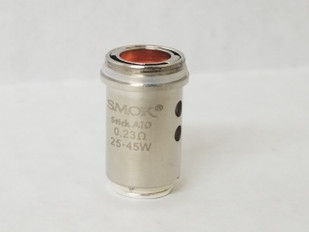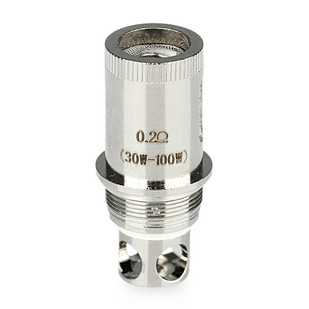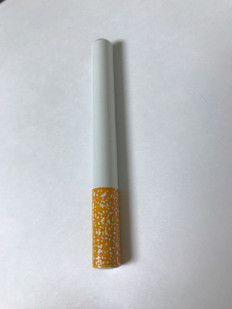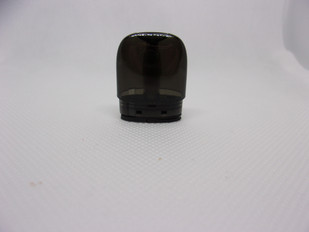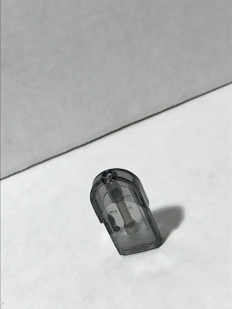- Home
- The Vape Mall Blog
- Diacetyl and Vaping
Diacetyl and Vaping
Posted by on
Recently there was a report least about a study done at Harvard about diacetyl in ejuice. Here we are going to provide some light on just what is diacetyl and how it may effect you.
What is diacetyl? According to Quora Diacetyl is a natural product of fermentation found in butter, beer and wine. It's also added to margarines and baked goods as an artificial ingredient. Basically diacetyl and other diketones are what gives food the creamy buttery tastes.
The FDA states that diacetyl is GRAS(Generally Recognized As Safe) and is on their GRAS list. The FDA also states: There is no evidence in the available information on diacetyl or starter distillate that demonstrates or suggests reasonable grounds to suspect a hazard to the public when they are used at levels that are now current or that might reasonably be expected in the future.
What does this mean to you as a vaper? Generally diacetyl in ejuice is found in creamy, desert type flavors. That doesn't mean it can not be in other flavors, however it is most popular in cream type flavors. That also does not mean that all creamy type flavors have diacetyl or diketones in them.
What is/was all the fuss about diacetyl? In 2000 there where eight microwave popcorn factory workers who contracted a form of bronchitis known as popcorn lung. There was also a case of a consumer who also contracted popcorn lung from eating two bags of microwave popcorn a day for 10 years. It is believed though that the contraction of popcorn lung is a result of powdered diacetyl, although there is no proof of this. With that information it is believed that there have only been nine total cases of popcorn lung in the last 15 years(since 2000) with none of them coming from ecig users.
The FDA also has the following on their site about diacetyl. Diacetyl is added to some foods for flavoring purposes. It is metabolized in mammals, is of low acute toxicity, and the no-adverse-effect level is estimated to be less than .3mg.
Headlines about the Harvard study may be shielding the truth about the potential risk of popcorn lung from using e-cigarettes. Dr. Konstantinos Farsalinos, an expert on e-cigarette research and an opponent of putting diacetyl in e-liquids, writes, “tobacco cigarette smoke contains high levels of diacetyl and acetyl propionyl, on average 100 and 10 times higher,” compared to average e-cigarette exposure.
Dr. Farsalinos also had this to say about the study, keeping in mind that he is opposed to have diacetyl in eliquid. Although I agree that we should know if e-liquids contain diacetyl and acetyl propionyl, I must note that the study has missed some very important points. One is the assessment of the levels found in their samples. The levels presented in Figure 2 are quite low, much lower that what we found in our study. In many cases, levels of these compounds are absolutely minimal, and it is NOT expected to raise any concerns about human health effects. Additionaly, the authors FAILED to mention the presence of these compounds in tobacco cigarette smoke. This omission creates the impression that e-cigarettes are exposing users to a new chemical hazard, while in reality their exposure will be much lower compared to smoking. Finally, the try to argue that the use of the NIOSH-defined safety limits should not be used because they refer to working environment and not to the general population. The latter may include vulnerable people or people with disease. However, we have previously argued that such an argument is irrelevant for a simple reason: e-cigarettes are used by smokers. Whether you are healthy or not, smoking will be a much stronger risk factor for health damage compared to any exposure coming from e-cigarettes (at least at the average levels found in our study and the new study). Thus, this argument is invalid and refers ONLY to never-smokers (and everyone agrees that there is no reason for a never-smokers to use e-cigarettes, whether they contain diacetyl or not).
In conclusion, the article is creating false impressions and exaggerates the potential risk from diacetyl and acetyl propionyl exposure through e-cigarettes. They failed to mention that these chemicals are present in tobacco cigarette smoke and violated a classical toxicological principle that the amount determines the toxicity and the risk.
The Harvard study does seem to bit a little biased towards anti vaping, and there are some flaws in the study, for example. Each e-cigarette was inserted into a sealed chamber attached to a lab-built device that drew air through the e-cigarette for eight seconds at a time with a resting period of 15 or 30 second between each draw. Eight seconds was chosen to make certain that each draw had adequate time for the entire contents to be forced out of the smoking device and through the sampling media.
Now unless you are doing some sort of competition you probably aren't inhaling for 8 seconds at a time. If you actually count out 8 seconds that is a long time to be inhaling vapor. Most people are going to be in the 2-3 second range for inhaling. So the length of time for inhaling is definitely flawed as most of you would agree that you probably don't stand around taking 8 second longs puffs on your ecig. If someone where to take 600 puffs a day from their ecig even at 3 seconds per puff that is only 30 minutes per day of inhaling through a device, which is far less than working in a factory 8 hours a day 5 days a week.
Not only is the risk of diacetyl exposure far lower for vapers than for smokers, but according to Critical Reviews in Toxicology, “smoking has not been shown to be a risk factor for bronchiolitis (popcorn lung).”
So is diacetyl safe? For ingestion is said to be safe, for inhaling it is said that it may cause issue such as popcorn lung in high amounts, however in low amounts it is not known to be dangerous. The Harvard study was not very objective, in their report, diacetyl was above the level of detection in 39 out of 51 samples tested ranging from >LOQ to 239 ug/e-cigarette (cartridge).
In fact, only ONE sample recorded 239 ug; 38 samples recorded less than 40 ug, 27 samples less than 10 ug, 18 samples less than 5 ug and seven samples less than 1 ug; the norm is 5 ug/cartridge. Would that change the picture drastically? Why was the 239 ug in one sample highlighted? More than likely it was because they or someone involved is biased towards anti vaping.
Can diacetyl and other diketones be removed from ejuice flavors? Yes it can and many flavor manufactures are in the process or already have some flavors that do not have diacetyl in it. We as a company will be using those flavors and have already begun in some instances. However that does not mean all flavors contain diacetyl.
Looking through the web and reading discussions about it, some vapers do not care that their eliquid has diacetyl or diketones in it, stating that they enjoy the taste, are aware of potential issues, have yet to experience any issues, and are ok with having it because the taste keeps them off cigarettes which are far worse. Doesn't mean everyone should as you should make your own decisions. One thing to remember is that is it unknown if vaping is safe, however it has been shown not only in studies but from actual users that is it safer that regular cigarettes. So if your choices are regular cigarettes or vaping then vaping is a safer option, however the safest option is to not vape or smoke cigarettes at all.
Here is a quote we found interesting from a Harvard member found on their own site. “I would like to see current smokers switching to e-cigarettes at a high rate—and use that is as low as possible among adolescents.”—Vaughan Rees, interim director of the Harvard Chan School’s Center for Global Tobacco Control
As always the case it is best to educate yourself with quality research, however it is also a good idea not to fall into media propaganda.
 Loading... Please wait...
Loading... Please wait...





